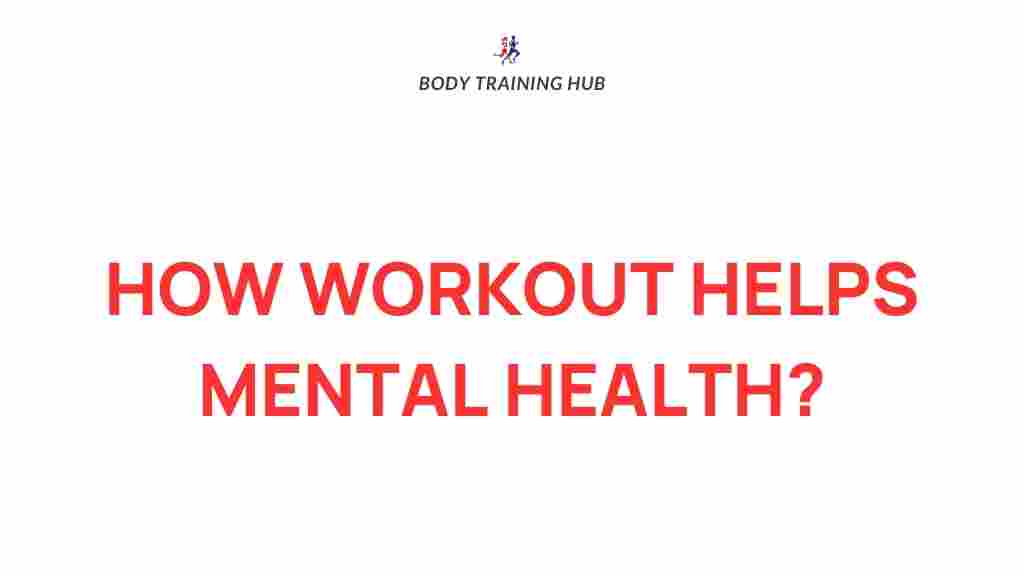Unveiling the Impact of Exercise on Mental Health
Exercise is often associated with physical health benefits, but its impact on mental health is profound and transformative. Engaging in regular physical activity not only enhances your physical abilities but also significantly improves your mood, reduces stress, and fosters overall well-being. This article delves into the various benefits of exercise for mental health, exploring how it can enhance mindfulness, elevate mood, and provide effective stress relief.
The Connection Between Exercise and Mental Health
The relationship between exercise and mental health is well-documented. Physical activity triggers the release of endorphins, often referred to as “feel-good” hormones, which can lead to an improved mood and a sense of happiness. Here are some key aspects of how exercise influences mental health:
- Reduces Symptoms of Depression: Regular exercise has been shown to reduce feelings of depression and anxiety. Studies suggest that engaging in physical activity can be as effective as antidepressant medications for some individuals.
- Boosts Self-Esteem: Achieving fitness goals, no matter how small, can boost self-confidence and enhance self-esteem, contributing to a better overall mental state.
- Enhances Cognitive Function: Regular physical activity improves brain function and memory, which can combat cognitive decline associated with aging.
- Promotes Sleep: Quality sleep is crucial for mental health. Exercise helps regulate sleep patterns and improves sleep quality, leading to better mental well-being.
Benefits of Physical Activity on Well-Being
Incorporating exercise into your daily routine can lead to numerous benefits for mental health and overall well-being. Here are some of the standout advantages:
- Stress Relief: Physical activity is a powerful stress reliever. It helps to relax the muscles and alleviate tension in the body, leading to a reduction in stress levels.
- Enhanced Mood: Exercise stimulates the production of endorphins, serotonin, and other neurochemicals that promote feelings of happiness and euphoria.
- Increased Mindfulness: Engaging in exercise, particularly activities like yoga or tai chi, encourages mindfulness, helping individuals stay present and focused.
- Better Resilience: Regular physical activity can improve resilience, helping individuals cope better with challenges and setbacks.
How to Incorporate Exercise into Your Routine
Integrating exercise into your daily life doesn’t have to be daunting. Here’s a step-by-step process to help you get started:
Step 1: Set Realistic Goals
Begin by setting achievable and realistic fitness goals. These can be small, incremental goals that lead to larger objectives over time. For example:
- Walk for 15 minutes a day.
- Incorporate two days of strength training each week.
- Join a local sports team or class.
Step 2: Choose Enjoyable Activities
Select physical activities that you enjoy. This could include:
- Walking or jogging in nature
- Joining a dance class
- Practicing yoga or Pilates
- Playing sports with friends
Step 3: Schedule Your Workouts
Make exercise a priority by scheduling it into your calendar. Treat your workout times as appointments that cannot be missed.
Step 4: Start Slowly and Progress Gradually
Begin with short sessions and gradually increase the duration and intensity of your workouts as your fitness improves. This helps prevent injury and keeps you motivated.
Step 5: Find a Workout Buddy
Having a friend to exercise with can boost motivation and accountability. It also makes the experience more enjoyable.
Mindfulness and Exercise
Mindfulness is a mental practice that involves being fully present in the moment. When combined with exercise, mindfulness can enhance the mental health benefits of physical activity. Here are some ways to incorporate mindfulness into your exercise routine:
- Focus on Your Breathing: During your workouts, pay attention to your breath. This helps anchor your mind and improve your connection to your body.
- Be Present: Engage fully with the physical sensations of your workout. Notice how your body feels during each movement.
- Practice Gratitude: Take a moment during or after your workout to appreciate what your body can do and the positive effects of exercise on your mental health.
Troubleshooting Common Barriers to Exercise
Many individuals face barriers when trying to incorporate exercise into their lives. Here are some common challenges and tips to overcome them:
- Lack of Time: Schedule shorter, high-intensity workouts if you’re short on time. Even 10-15 minutes of exercise can be beneficial.
- Lack of Motivation: Remind yourself of the mental health benefits of exercise. Consider tracking your progress to see changes over time.
- Feeling Overwhelmed: Start with small, manageable activities. Gradually build up to more complex routines.
- Physical Limitations: Consult a healthcare professional for advice on exercises that are suitable for your specific condition.
Conclusion
The impact of exercise on mental health is significant and multifaceted. From reducing stress and anxiety to boosting self-esteem and mood, the benefits of physical activity are undeniable. By incorporating exercise into your daily routine, you can enhance your mental well-being and cultivate a healthier lifestyle. Remember, the journey to better mental health starts with a single step—so lace up those shoes and get moving!
For more information about the mental health benefits of physical activity, check out this comprehensive guide. Remember, every bit of movement counts towards a healthier you!
If you’re interested in exploring mindfulness techniques further, please visit this resource for additional insights and practices.
This article is in the category Strength & Recovery and created by BodyTraining Team
